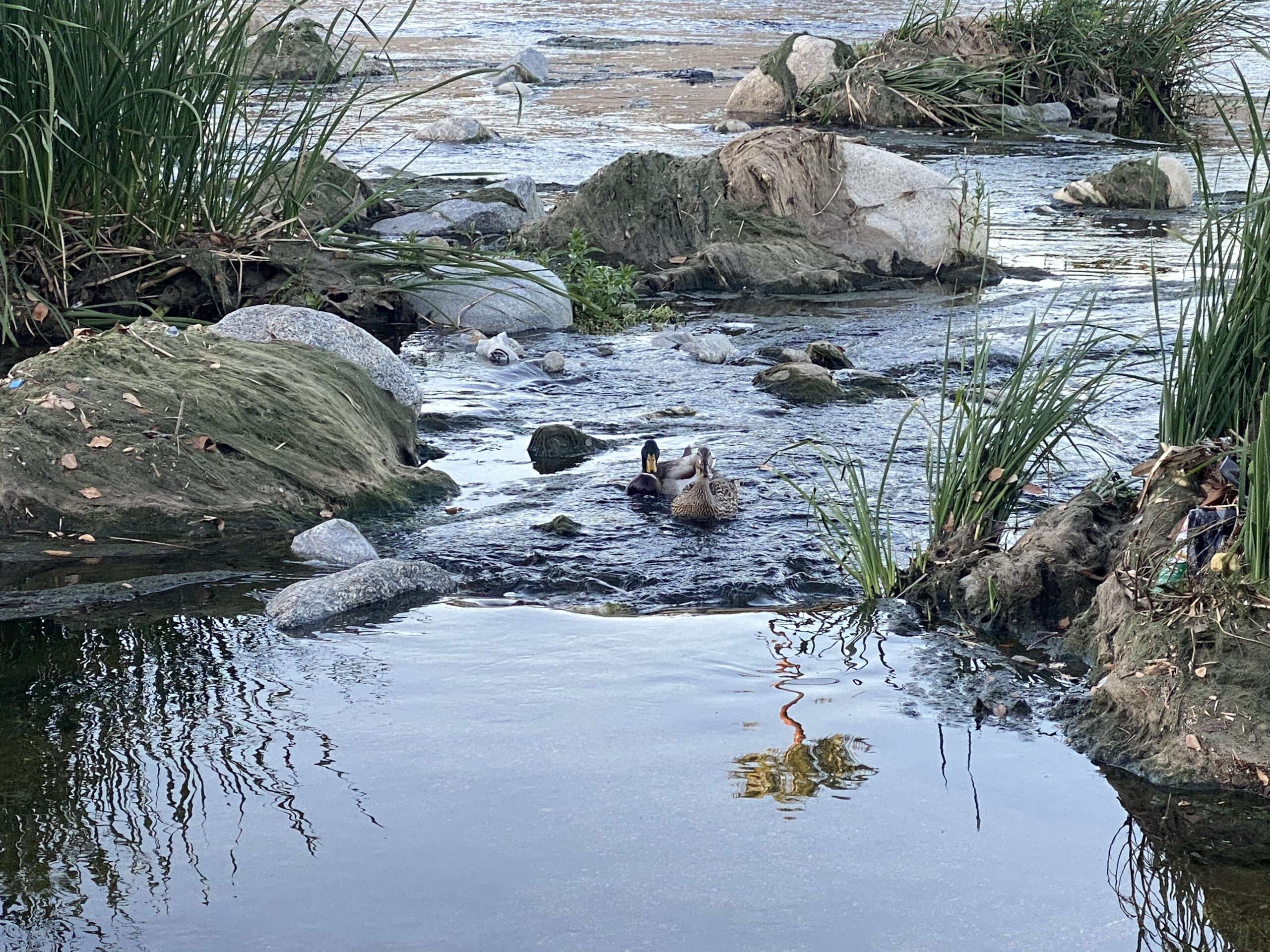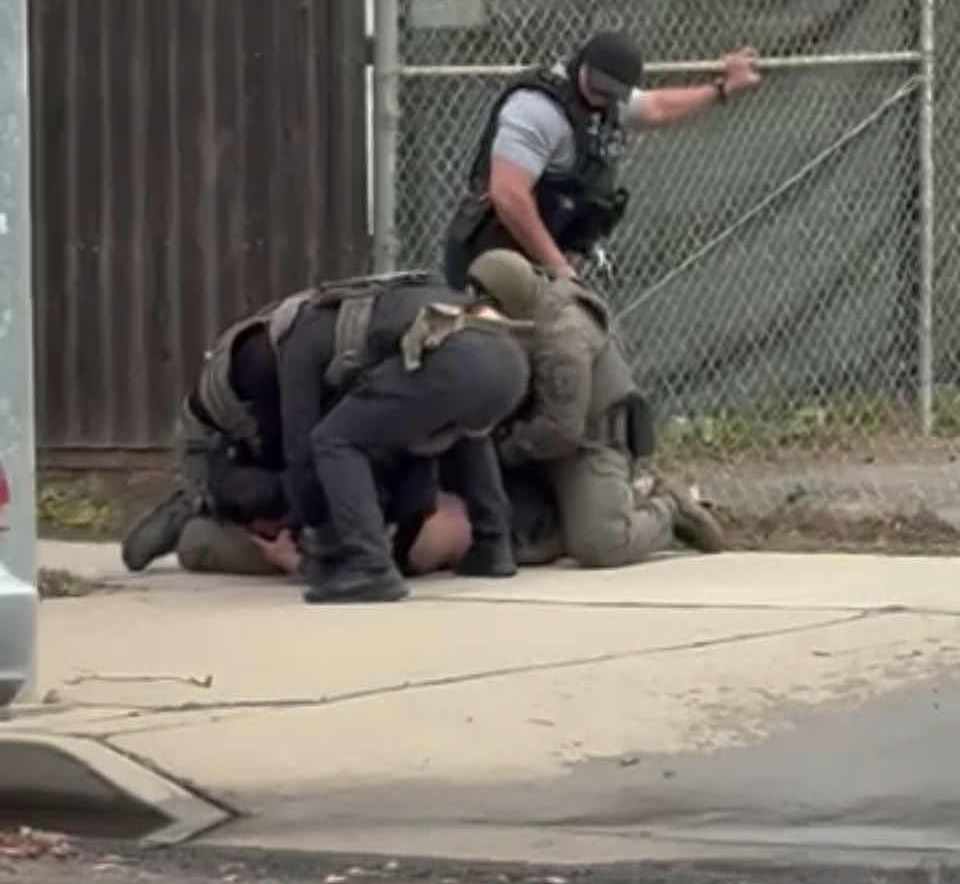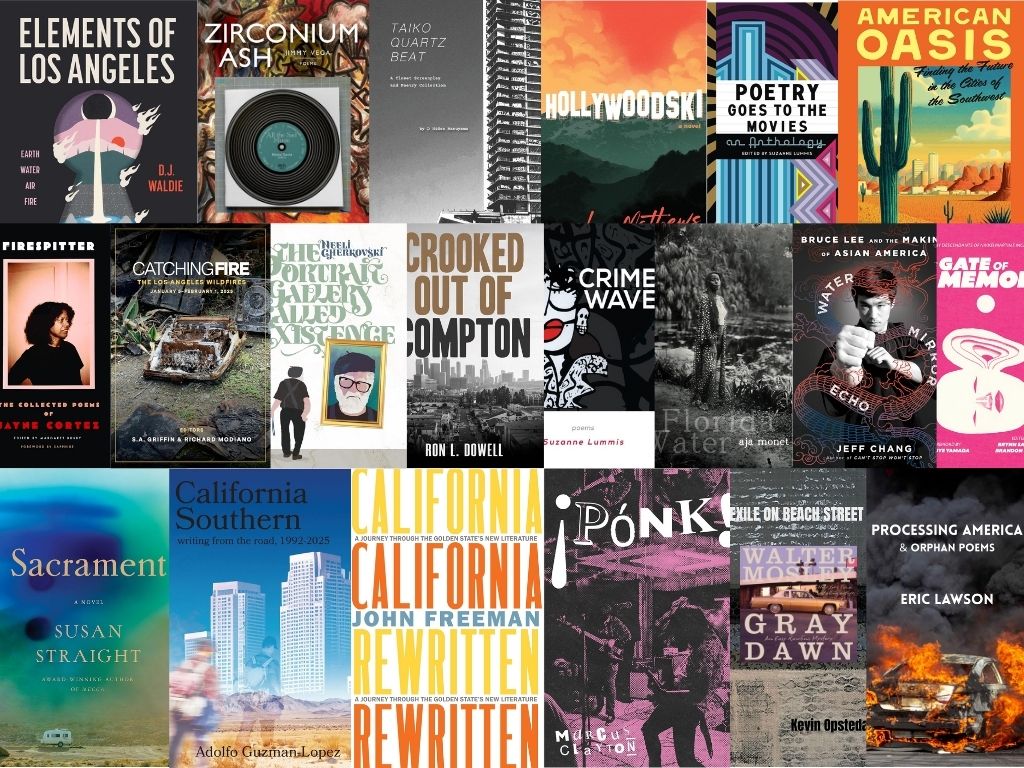When it rains in LA, especially for long periods of time, the experience can be frustrating, dull, life washed out. It is mostly experienced inside a home or an apartment, or worse, in mind-numbing traffic, even slower when wet. Gray skies, the condos looking uglier than usual, all the other aggravated motorists with their long exasperated sighs fogging their windows, the brake lights pulsing in a damp blur.
At the river, though, the opposite. Action. Eruption. Excitement.
People often mock the river, especially those new to the city, maybe seeing it for the first time at its weakest, flood-controlled stretches.
“You call that a river? It’s barely a stream.
And those concrete banks! So it’s like, what, a man-made river, right? Where’s the nature in this town!”
No. It’s not man-made. The city did that.
“Oh. Well, isn’t that just like L.A.? She’s had work done.”
Or whatever.
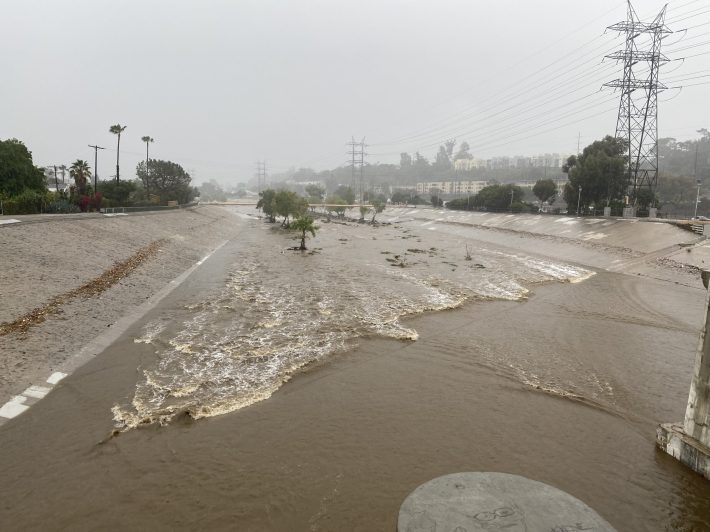
Those same people will marvel once it rains. Stepping outside in Frogtown or Atwater, Instagramming its sudden choppy flow. In a bit of a thrilled stupor from its ferocity.
For many, it’s a sight oft unseen. If you’re new and unfamiliar, or just don’t do much exploring, you might only know it from the movies, where it’s primarily filmed in its stark emptiness, a symbol of despair and doom, wide metropolitan malaise. It’s either a dark and lonely place or a stark bright stretch for a drag race. Movies like Point Blank and To Live And Die In L.A., Terminator 2: Judgement Day, even fall into the former designation. Grease, Gone in 60 Seconds, The Italian Job, and countless others fall into the latter. Repo Man makes grand use of both. I guess Drive somehow flips both categories on their heads—a car scene that’s not a race, appreciating the beauty and nature of the river. I digress.
So to most, it’s this odd slab of civil engineering with a thin tributary trickling through it like a loose ribbon being slowly pulled from a far-off place.
But then it rains.
And the river roars alive. A brakeless vehicle, engine in the red, careening downhill 51 miles of track designed to exponentiate its rush.
That’s why the Army Corp of Engineers paved these steep banks after the Los Angeles Flood of 1938, when many citizens called for greater flood control and the recall of Mayor Frank L. Shaw—so that she may use the extra surface area to fully open her throttle, the flat concrete expediting the water much faster than banks of mud and brush, moving the swell swiftly past the neighborhoods and splashing into the Long Beach Harbor.
Don’t get me wrong, I wasn’t hating on people who go to watch it when this happens. Instagram it even. She’s a beauty, show her off. I’ve done it too. In fact, it’s one of my favorite things, to drive out to my spot and park the car, carefully walk under the bridge and as far down as safety allows, or view it bubbling below me from a pedestrian bridge.
There are some great places to do this. Sure, those pathways in Frogtown. Better yet, one of the many historical bridges connecting Lincoln Heights to downtown, like the North Broadway (née Buena Vista) Viaduct with its fluted Ionic columns and hundred-year-old street lights. One of my favorite things to do is to take the Gold Line when it’s raining, exiting Chinatown and passing high over the rushing river with the haunted jail behind you.
William Mulholland, the “father of the Los Angeles water system,” had a favorite spot to watch the erupting river for some time at least. In the 1800s, he lived in a shack outside of Griffith Park to study the river by day and his engineering books and by kerosene lamp at night. There’s a memorial fountain and park there now in his honor. You’ve probably noticed it while sitting in that crawling traffic at the intersection of Los Feliz Boulevard and Riverside Drive.
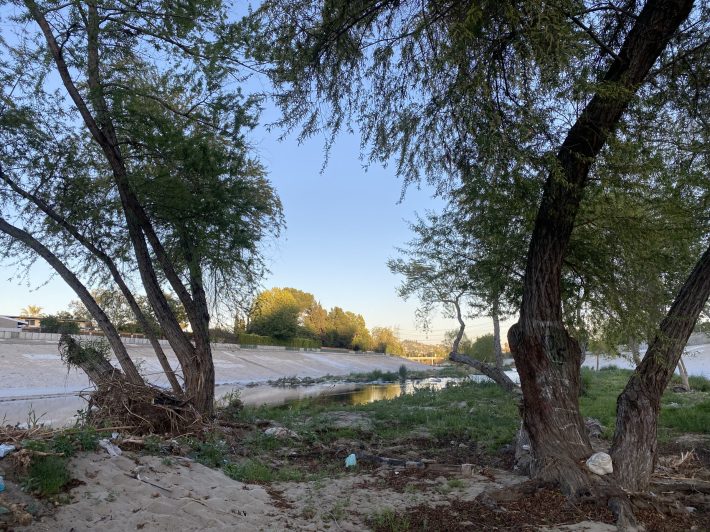
Of course, this fascination with the Río Porciúncula, as she was initially known, isn’t without its dangers. The slippery banks and rapid rise can be treacherous. Many have perished skirting the water. Several years ago, two teen boys, Gustavo Ramirez and Carlos Daniel Joval were swept away and drowned. Their bodies were found submerged in a pocket of water 12 feet deep. Yes, it gets that deep. And even deeper in many places. Places where it was barely Doc Marten deep mere minutes ago.
Keep in mind, too, how many unhoused neighbors we’ve lost down there, unaccounted for. There are plenty of encampments along the banks of the river, in those sewer-like half-tunnels for runoff—the weather can change instantly, and those seemingly safe perches get washed away quickly. Or the unfortunate people who make the mistake of taking shelter beneath the bridges during a storm, unaware that a flash flood is hurtling toward them.
Eventually, the rain will stop. Maybe right at the top, where the Arroyo Calabasas and Bell Creek feed into it, the last of the rainfall carrying on its journey through Canoga Park, past the Winnetka Bowl, into Reseda, then behind Casa Vega, through Studio City and Universal Studios, curving around Forest Lawn Cemetery where my personal favorite Brittany Murphy is buried, to the L.A. Zoo and down the eastern length of Griffith Park, on to downtown, passing St. Vincent de Paul, then Men’s Central Jail, Aliso Village, under the new 6th Street Bridge, Chinatown, and Boyle Heights, Maywood, splitting Cudahy and Bell Gardens, through East Compton, shoring up to Rancho Los Cerritos, and finally into the Long Beach Harbor past the Catalina Express and the Queen Mary.
At which point does a river finally become the ocean? I’m not sure. Seems more of a spiritual question than one of limnology, in my opinion.
When it stops raining, the city shines. Los Angeles never looks better than after a rain. Bright and blushing. The sun coats everything in a softlight glimmer. The sky is a power-washed blue. The clouds are calm, soft whitecaps. The Verdugo Foothills are emeralds nestled beneath the exquisite detail of the San Gabriel Mountains, all cobalt and cocaine.
The river dies down. The mallards and the egrets and the heron return, and maybe even some coyotes come down from the hills for a drink. Joyous gangs of black-necked stilts sprint around the shallow water.
Yes, after the rain, after the river dies down, it comes back to life in its own way.
